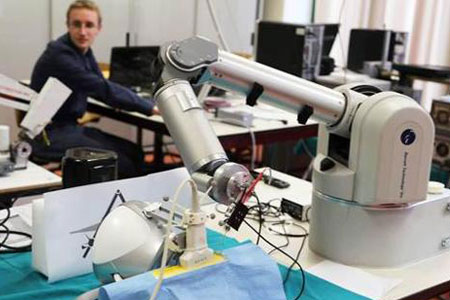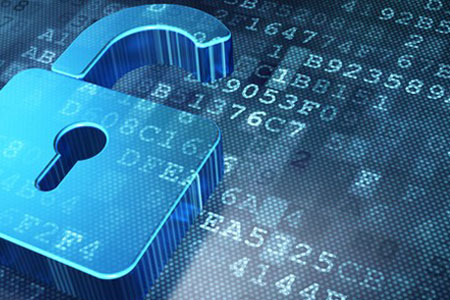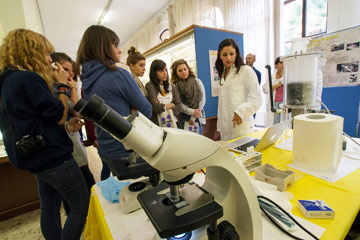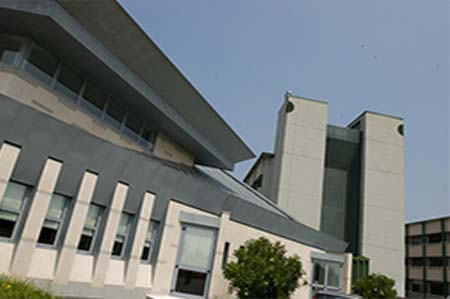|
Master's degree in Medical Bioinformatics
|
Machine learning for biological structures and networks (2025/2026)
|
6
|

|
4
|
(Teoria)
|
|
2
|
(Laboratorio)
|
|
Bachelor's degree in Bioinformatics
Course partially running
|
Pattern recognition and Signal and image Processing in Bioinformatics (2025/2026)
|
12
|

|
2
|
PATTERN RECOGNITION PER BIOINFORMATICA (Laboratorio)
|
|
4
|
PATTERN RECOGNITION PER BIOINFORMATICA (Teoria)
|
|
Bachelor's degree in Computer Science
Course partially running
|
Signal and image processing (2025/2026)
|
6
|

|
2
|
(Laboratorio)
|
|
Master's degree in Medical Bioinformatics
Course partially running
|
Machine learning for biological structures and networks (2024/2025)
|
6
|

|
4
|
(Teoria)
|
|
2
|
(Laboratorio)
|
|
Bachelor's degree in Bioinformatics
Course partially running
|
Pattern recognition and Signal and image Processing in Bioinformatics (2024/2025)
|
12
|

|
4
|
RICONOSCIMENTO E RECUPERO DELL'INFORMAZIONE PER BIOINFORMATICA (Teoria)
|
|
2
|
RICONOSCIMENTO E RECUPERO DELL'INFORMAZIONE PER BIOINFORMATICA (Laboratorio)
|
|
Bachelor's degree in Computer Science
Course partially running
|
Signal and image processing (2024/2025)
|
6
|

|
2
|
(Laboratorio)
|
|
Master's degree in Medical Bioinformatics
Course partially running
|
Machine learning for biological structures and networks (2023/2024)
|
6
|

|
4
|
(Teoria)
|
|
2
|
(Laboratorio)
|
|
Bachelor's degree in Bioinformatics
Course partially running
|
Pattern recognition and Signal and image Processing in Bioinformatics (2023/2024)
|
12
|

|
2
|
RICONOSCIMENTO E RECUPERO DELL'INFORMAZIONE PER BIOINFORMATICA (Laboratorio)
|
|
4
|
RICONOSCIMENTO E RECUPERO DELL'INFORMAZIONE PER BIOINFORMATICA (Teoria)
|
|
Bachelor's degree in Computer Science
Course partially running
|
Signal and image processing (2023/2024)
|
6
|

|
2
|
(Laboratorio)
|
|
Master's degree in Medical Bioinformatics
Course partially running
|
Machine learning for biological structures and networks (2022/2023)
|
6
|

|
4
|
(Teoria)
|
|
2
|
(Laboratorio)
|
|
Bachelor's degree in Bioinformatics
Course partially running
|
Pattern recognition and Signal and image Processing in Bioinformatics (2022/2023)
|
12
|

|
2
|
RICONOSCIMENTO E RECUPERO DELL'INFORMAZIONE PER BIOINFORMATICA (Laboratorio)
|
|
4
|
RICONOSCIMENTO E RECUPERO DELL'INFORMAZIONE PER BIOINFORMATICA (Teoria)
|
|
Bachelor's degree in Computer Science
Course partially running
|
Signal and image processing (2022/2023)
|
6
|

|
2
|
(Laboratorio)
|
|
Master's degree in Medical Bioinformatics
Course partially running
|
Machine learning for biological structures and networks (2021/2022)
|
6
|

|
4
|
(Teoria)
|
|
2
|
(Laboratorio)
|
|
Bachelor's degree in Bioinformatics
Course partially running
|
Pattern recognition and Signal and image Processing in Bioinformatics (2021/2022)
|
12
|

|
2
|
RICONOSCIMENTO E RECUPERO DELL'INFORMAZIONE PER BIOINFORMATICA (Laboratorio)
|
|
4
|
RICONOSCIMENTO E RECUPERO DELL'INFORMAZIONE PER BIOINFORMATICA (Teoria)
|
|
Bachelor's degree in Computer Science
Course partially running
|
Signal and image processing (2021/2022)
|
6
|

|
2
|
[I turno] (Laboratorio)
|
|
Master's degree in Medical Bioinformatics
Course partially running
|
Computational analysis of biological structures and networks (2020/2021)
|
6
|

|
2
|
(Laboratorio)
|
|
4
|
(Teoria)
|
|
Bachelor's degree in Bioinformatics
Course partially running
|
Pattern recognition and Signal and image Processing in Bioinformatics (2020/2021)
|
12
|

|
4
|
RICONOSCIMENTO E RECUPERO DELL'INFORMAZIONE PER BIOINFORMATICA (Teoria)
|
|
2
|
RICONOSCIMENTO E RECUPERO DELL'INFORMAZIONE PER BIOINFORMATICA (Laboratorio)
|
|
Master's degree in Medical Bioinformatics
Course partially running
|
Computational analysis of biological structures and networks (2019/2020)
|
6
|
|
2
|
(Laboratorio)
|
|
4
|
(Teoria)
|
|
Bachelor's degree in Bioinformatics
Course partially running
|
Data management and retrieval for bioinformatics (2019/2020)
|
12
|

|
2
|
RICONOSCIMENTO E RECUPERO DELL'INFORMAZIONE PER BIOINFORMATICA (Laboratorio)
|
|
4
|
RICONOSCIMENTO E RECUPERO DELL'INFORMAZIONE PER BIOINFORMATICA (Teoria)
|
|
Master's degree in Medical Bioinformatics
Course partially running
|
Computational analysis of biological structures and networks (2018/2019)
|
6
|
|
4
|
(Teoria)
|
|
2
|
(Laboratorio)
|
|
Bachelor's degree in Bioinformatics
Course partially running
|
Data management and retrieval for bioinformatics (2018/2019)
|
12
|

|
2
|
RICONOSCIMENTO E RECUPERO DELL'INFORMAZIONE PER BIOINFORMATICA (Laboratorio)
|
|
4
|
RICONOSCIMENTO E RECUPERO DELL'INFORMAZIONE PER BIOINFORMATICA (Teoria)
|
|
Master's degree in Medical Bioinformatics
Course partially running
|
Computational analysis of biological structures and networks (2017/2018)
|
6
|
|
6
|
|
|
Bachelor's degree in Bioinformatics
Course partially running
|
Data management and retrieval for bioinformatics (2017/2018)
|
12
|

|
6
|
RICONOSCIMENTO E RECUPERO DELL'INFORMAZIONE PER BIOINFORMATICA
|
|
Master's degree in Medical Bioinformatics
Course partially running
|
Computational analysis of biological structures and networks (2016/2017)
|
6
|
|
5
|
|
|
Bachelor's degree in Bioinformatics
Course partially running
|
Information recognition and retrieval for bioinformatics
(2016/2017)
|
12
|

|
8
|
(Teoria)
|
|
Bachelor's degree in Bioinformatics
Course partially running
|
Information recognition and retrieval for bioinformatics
(2015/2016)
|
12
|
|
9
|
(Teoria)
|
|
Bachelor's degree in Bioinformatics
Course partially running
|
Information recognition and retrieval for bioinformatics
(2014/2015)
|
12
|
|
3
|
(Laboratorio)
|
|
9
|
(Teoria)
|
|
Bachelor's degree in Bioinformatics
Course partially running
|
Information recognition and retrieval for bioinformatics
(2013/2014)
|
12
|
|
9
|
(Teoria)
|
|
3
|
(Laboratorio)
|
|
Bachelor's degree in Bioinformatics
Course partially running
|
Information recognition and retrieval for bioinformatics
(2012/2013)
|
12
|
|
9
|
(Teoria)
|
|
Bachelor's degree in Bioinformatics
Course partially running
|
Information recognition and retrieval for bioinformatics
(2011/2012)
|
12
|
|
9
|
(Teoria)
|
|
Bachelor's degree in Bioinformatics
Course partially running
|
Information recognition and retrieval for bioinformatics
(2010/2011)
|
12
|
|
9
|
|
|
Bachelor's degree in Bioinformatics
Course partially running
|
Information recognition and retrieval for bioinformatics
(2009/2010)
|
12
|
|
12
|
|
|
Bachelor's degree in Bioinformatics (until 2008-2009)
Course Not running, not visible
|
Algorithms and Data Structures (2008/2009)
|
10
|
|
2
|
Laboratorio
|
|
Bachelor's degree in Bioinformatics (until 2008-2009)
Course Not running, not visible
|
Information recovering (2008/2009)
|
5
|
|
5
|
|
|
5
|
|
|
Bachelor in Information Technology: Multimedia
Course Not running, not visible
|
Systems and Signals (2002/2003)
|
7
|
|
|
Laboratorio
|








 bicego
bicego univr
univr
